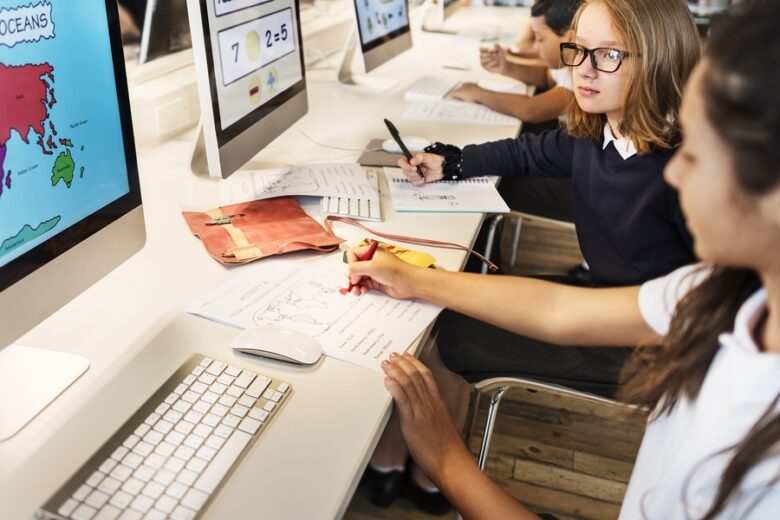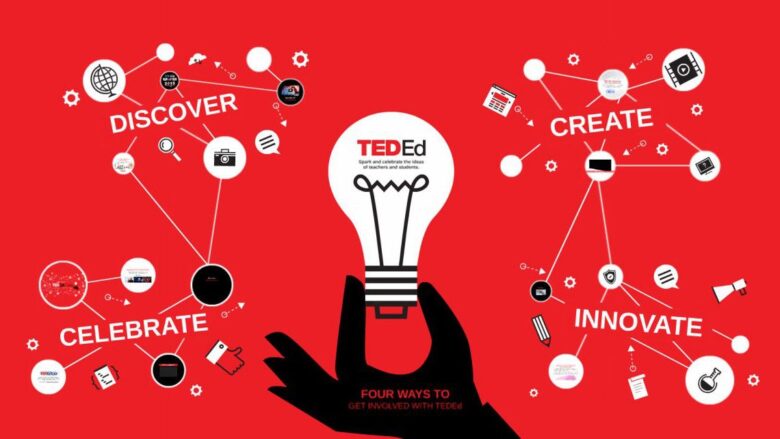Remember the day you first thought of entering a college or university? Those bright and colorful associations you had about the educational process and all the people who’d be there to share their wisdom in a most fascinating way? However, the majority of freshmen inevitably face a sharp decrease of enthusiasm after sitting a lecture or two, first being all ears and then trying not to fall asleep with the monotonous flow of information from the lecturer.
But modern education is so much more than cranking out exam papers after countless hours of rote learning and bare listening to teachers and professors. With the abundance of online educational materials and effective learning resources, anyone has all the means to make one’s studying truly meaningful. And here’s how to make it all work.
Are Learning Resources Really That Important?

Although the answer to this question is quite obvious, some might argue that a good lecturer is enough to learn a subject. To break the myth quickly, here’s a study conducted by Harvard University showing that whatever brilliant a speaker may be, passive listening and nothing don’t add points to your actual level of subject knowledge.
Getting back to the importance of learning resources, first, we have to understand such basic notions as “active learning” and “learning resources”.
What’s The Idea of Active Learning?

Back in the Middle Ages, the only learning resource students had was mostly a religious book and a monk, with quite a limited set of skills and knowledge he had to pass on. Today this type of learning is simply called “passive” since there was no brain activity except listening and word-for-word writing or reciting. Modern educators strive to reduce the percent of passive learning in class to the minimum, engaging students in diverse learning activities.
The reason for that is quite simple – active learning technology is universally considered to be the most effective type of processing new information which helps to place it right in the long-term memory unit. The more we approach certain material from various learning angles, the more profound our final knowledge becomes. The thing is that without additional learning resources we can’t really work the material through and call it “active learning”.
Learning Resources. What Are They?
Initially, a learning resource is literally anything that teachers can use to engage students in active learning and whatever students can use themselves for immersing in a particular topic or subject in general. Scientifically they are divided into auditory, visual, and audio-visual materials, differing not only by their type but also by the teaching or learning purpose.
Textbooks, videos, images, memes, podcasts, in-class games, educational apps, software, or services – these are a tiny part of the whole set of learning resources that can help you make studying diverse, effective – and what’s the most important – personally meaningful.
Teaching VS Learning Resources

In fact, all the educational resources can be both teaching and learning depending on the person who uses them. The same textbook or app can be converted from teaching into a learning source. But are teaching digital resources enough for students’ success?
The Materials Coming From Teachers
Modern teachers are not locked out from the outer world of media and interactive data. Those who are truly into their subject try to incorporate videos, material revision games, fascinating studies, and articles into their lessons. Such an active in-class pastime feels great and it seems that the information taught digests well. However, only those materials that we find by ourselves have real value.
Self-Found Educational Resources
True studying begins only when we start putting effort into what we do. Making yourself interested in a subject is usually the first step. Coming back to your dorm or getting comfortable in a library to study hard, the only thing left after lectures is the enthusiasm inspired by a professor. But the rest of the work you have to do yourself. That’s why surfing the net in search of helping educational materials and resources is much more valuable than receiving those without an effort made.
The Value of Education And The Role of Learning Resources

The debate about the value of education is never-ending. But while some debate, others get their degrees and enjoy the world of opportunities. However, a good education is not a golden ticket anymore, rather an essential prerequisite to making your way in the world.
Yes, there are young people who deal without a finished degree quite successfully but we can count them on the fingers of one hand. Entering a college or university doesn’t assure your success as well unless you know your goals and consistently follow them.
The “Self” Shift in Education
Education has always been a two-way process. Teaching and learning used to go hand in hand for a long time. But in recent decades, there has been a shift towards education with the “self-” prefix. Self-teaching, self-learning, self-perception, and self-estimation now hold center stage, emphasizing the leading role of the student in one’s own education and professional development. That’s why learning or rather self-teaching resources are indispensable for any modern student.
Technology And Its Impact on Education

With the burst of the pandemic, it’s hard to imagine modern education not being aided by technology. eLearning is the only reason students all over the world have been able to keep up with their studies. In this regard, 58% of educators changed their opinion of EdTech for the positive, and 65% of faculties support the use of digital educational resources. But is technology a panacea for successful learning?
EdTech Pros
Technology makes education seamless. We can turn to the world of knowledge round the clock and study whenever we have a spare minute in any environment. It keeps us engaged and motivated, allowing us to think out of the box and express ourselves the way we want. We can share our thoughts and concepts, cooperate and study together in virtual classrooms, learning from each other, and creating wider community ties.
EdTech Cons
Despite all the interactive and fascinating opportunities that technology adds to conventional education, it also has a negative effect if used in imbalance with other more traditional educational means. Experts say that excessive data visualization makes students’ imagination less productive and reduces the level of their thinking activity, turning it primitive. There are some other disadvantages applicable to EdTech but the imbalance in its usage is the one that threatens the knowledge quality most of all.
A Comprehensive List of Digital Learning Resources
When it comes to using technology in education, moderation is the key. If you’re familiar with the rule, feel free to use any of the resources we’ve carefully compiled below for your benefit.
Extra Knowledge Sources
When program materials become boring and insufficient, here come web-based pools of specified data available in a couple of clicks.
TED-Ed

TED-Ed is a great source of easy-to-comprehend material in the form of colorful videos shared by a wide community of specialists to make concepts, news, universal or local issues, and topics clear for students’ audience.
Udemy
Udemy presents a pool of information on an array of job-oriented study topics and shares valuable insights made by people who work in a particular field.
Coursera
Coursera is known worldwide as one of the most comprehensive online knowledge sources. It offers students from all over the world to attend virtual courses of renowned universities to enrich their study-field understanding.
Assignment Helpers

College and university assignments take a considerable amount of time. So why not make the work easier and delegate some of the functions to the learning apps?
Gradesfixer
On the GradesFixer.com website, there are over 40,000 pages of free essay examples on a wide variety of topics. From K-Pop to analysis of the Modern Consumer Society.
Grammarly
Paperwork is a synonym for being a senior student. Grammarly makes the process of proofreading much easier by instant checking and correcting typos, grammar, and stylistic mistakes, and showcasing plagiarism signs.
Quizlet

Fact learning might be challenging at times so Quizlet suggests an easy way of remembering information by using the flashcard method. You can create files, topics and share them with others.
Mendeley
Lots of e-reading work is a burden unless your reading app allows you to highlight words, make notes, and annotate whatever you need. And that’s what Mendeley does.
MindMeister
Mindmapping is said to be an effective tool for material long-term memorization. MindMeister helps you organize ideas and create a visual out of them.
Study Life Organizers
Staying organized is the key to balanced and effective learning. There are a few apps to unburden your mind from daily tasks and deadlines.
MyLifeOrganized

MyLifeOrganized is dedicated to making daily study tasks less unwanted by breaking them down into small and easy-to-do parts, schedule their deadlines, and prioritize according to your needs.
Canvas Student
It’s great to have a study organizer at hand. Canvas Student is a place where a student can find one’s grades, assignments, and course materials – all in one place.
Evernote
What is a student without taking notes? If you prefer digital noting, Evernote is an intuitive, functional, and responsive app to cater to all of your study needs.
The Key To Effective Use Of Learning Resources
Downloading an educational app to your smartphone or subscribing to a great online college course isn’t enough to ensure the learning value of those resources. Self-education is tricky so follow up to check out the tips for making the most of any learning resource.
Point Out The Goal
Any fishing for educational sources starts from a clear understanding of the aim of your search. There are so many apps, services, and programs, that you can drown while looking for something particular without an idea of what you’re doing it for.
Check Reviews
The above-mentioned variety means that there are alternatives to everything, so if you’re not quite satisfied with a resource, you can always find something better. And by checking reviews you’ll save up a lot of trial time.
Don’t Grab Everything From the Table
The key to getting it right with digital educational resources is to keep the balance. You don’t need all the French teaching apps in the App Store at once. So don’t try to embrace everything – be selective, otherwise, the amount of material will work against you.
How to Make The Right Choice For Yourself?

Some educational resources are great for some students but inconvenient for others. How to make it work for yourself and feel the efficiency?
Know Your Options
It sometimes happens that we might not even know that our study work can be simplified and made less time and effort consuming. So before getting down to work, make a little Google and App Store research to be aware of the helping options.
Make a System
After you find the necessary apps/services/other types of additional educational resources, take your time to make up a system of how and when to use them. For instance, if you’re a language learner, create an order in which you’ll use a grammar app, an online grammar training portal, a YouTube lexical video, and a foreign language reading app. With a systematic approach, you’re most likely to benefit from all your sources.
Use Diverse 3 Types of Sources
As we’ve mentioned far above, the material is learned better if we approach it from various angles. The diversity of educational materials allows us to incorporate their different types to achieve deeper subject knowledge and be sure our efforts are not in vain.
The Final Word
The far and wide usage of the world wide web has greatly changed the way we perceive information. The interactive audio-visual way of daily data delivery has accustomed us to the fact that knowledge can be acquired without much effort in a fun and effortless way.
Digital learning resources including apps, services, videos, and an array of others prove it right. The mnemonic technology of remembering things really does its work. But it’s only one of the two major pillars of successful learning. Reading, reciting, taking, and revising notes, eventually listening should not be considered “obsolete” since only the interconnection and parallel use of these two groups of technologies can assure a deep and profound level of your knowledge.


